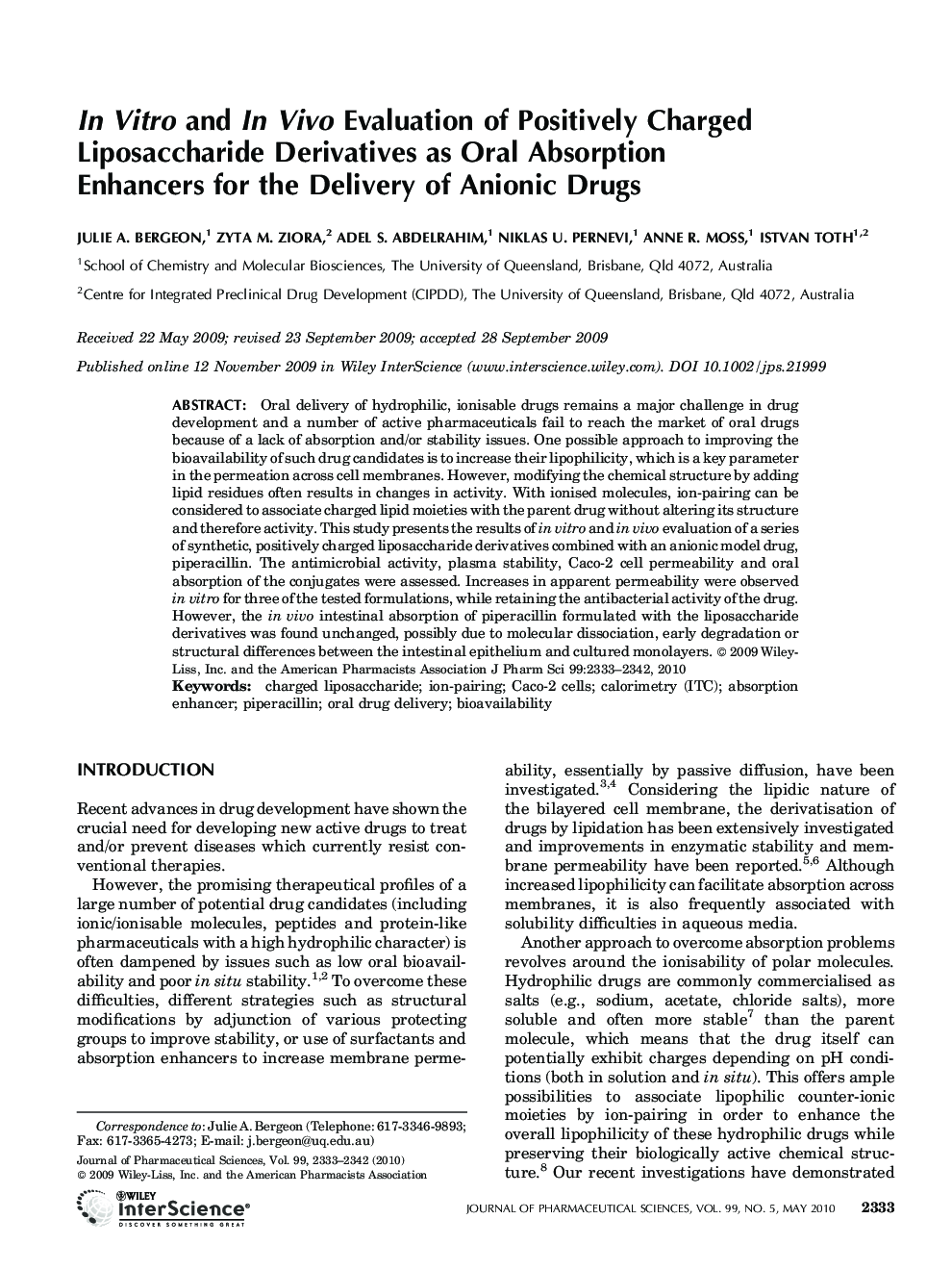| Article ID | Journal | Published Year | Pages | File Type |
|---|---|---|---|---|
| 2485903 | Journal of Pharmaceutical Sciences | 2010 | 10 Pages |
Abstract
Oral delivery of hydrophilic, ionisable drugs remains a major challenge in drug development and a number of active pharmaceuticals fail to reach the market of oral drugs because of a lack of absorption and/or stability issues. One possible approach to improving the bioavailability of such drug candidates is to increase their lipophilicity, which is a key parameter in the permeation across cell membranes. However, modifying the chemical structure by adding lipid residues often results in changes in activity. With ionised molecules, ionâpairing can be considered to associate charged lipid moieties with the parent drug without altering its structure and therefore activity. This study presents the results of in vitro and in vivo evaluation of a series of synthetic, positively charged liposaccharide derivatives combined with an anionic model drug, piperacillin. The antimicrobial activity, plasma stability, Cacoâ2 cell permeability and oral absorption of the conjugates were assessed. Increases in apparent permeability were observed in vitro for three of the tested formulations, while retaining the antibacterial activity of the drug. However, the in vivo intestinal absorption of piperacillin formulated with the liposaccharide derivatives was found unchanged, possibly due to molecular dissociation, early degradation or structural differences between the intestinal epithelium and cultured monolayers. © 2009 WileyâLiss, Inc. and the American Pharmacists Association J Pharm Sci 99: 2333-2342, 2010
Keywords
Related Topics
Health Sciences
Pharmacology, Toxicology and Pharmaceutical Science
Drug Discovery
Authors
Julie A. Bergeon, Zyta M. Ziora, Adel S. Abdelrahim, Niklas U. Pernevi, Anne R. Moss, Istvan Toth,
